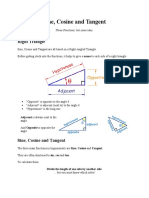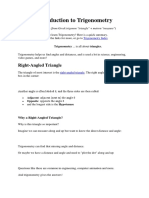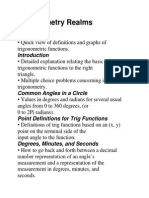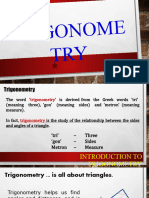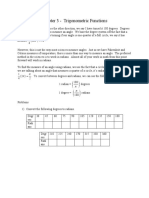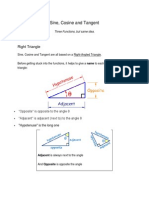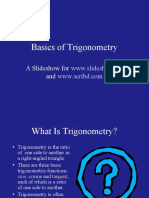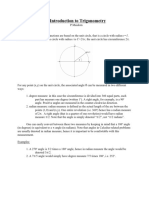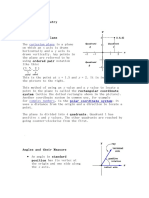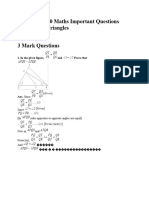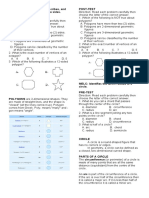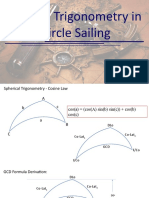0% found this document useful (0 votes)
37 views5 pagesIntroduction To Trigonometry
Trigonometry is the study of triangles, particularly right-angled triangles, and is essential for calculating angles and distances in various fields like science and engineering. The primary functions in trigonometry are Sine, Cosine, and Tangent, which relate the sides of a triangle to its angles. Additionally, trigonometry involves concepts like the Unit Circle, degrees and radians, and solving triangles to find missing sides and angles.
Uploaded by
mwiigoCopyright
© © All Rights Reserved
We take content rights seriously. If you suspect this is your content, claim it here.
Available Formats
Download as DOC, PDF, TXT or read online on Scribd
0% found this document useful (0 votes)
37 views5 pagesIntroduction To Trigonometry
Trigonometry is the study of triangles, particularly right-angled triangles, and is essential for calculating angles and distances in various fields like science and engineering. The primary functions in trigonometry are Sine, Cosine, and Tangent, which relate the sides of a triangle to its angles. Additionally, trigonometry involves concepts like the Unit Circle, degrees and radians, and solving triangles to find missing sides and angles.
Uploaded by
mwiigoCopyright
© © All Rights Reserved
We take content rights seriously. If you suspect this is your content, claim it here.
Available Formats
Download as DOC, PDF, TXT or read online on Scribd
/ 5




